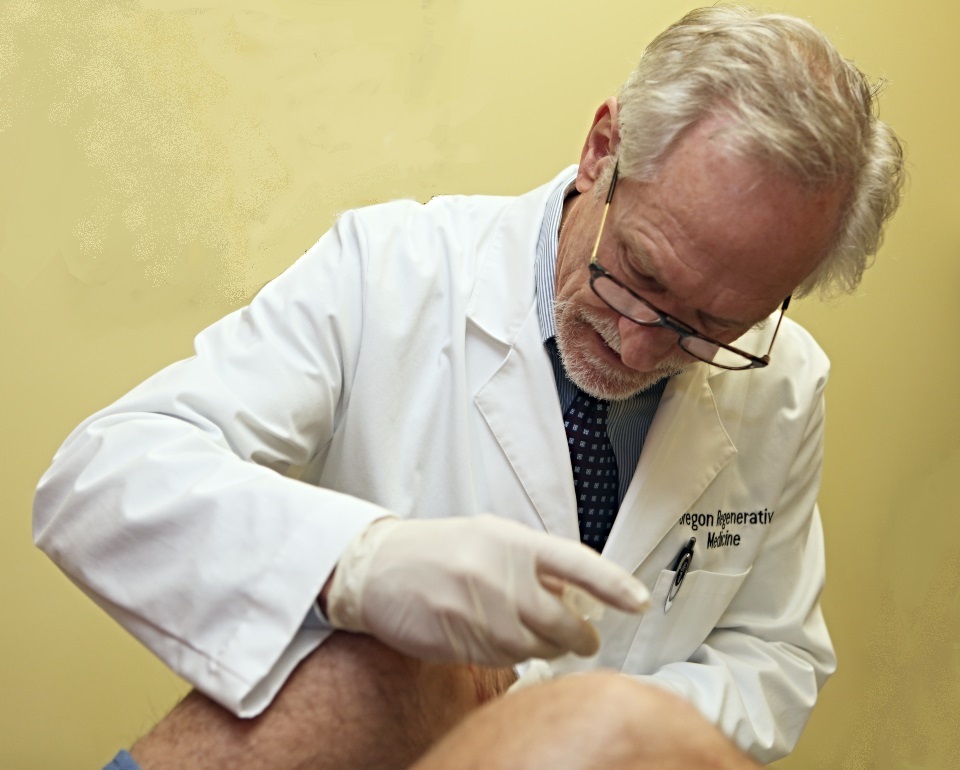A study published in The New England Journal of Medicine compared outcomes of arthroscopic partial meniscus repair with sham surgery. A total of 146 patients, aged 35-60 years, were randomly assigned to undergo either arthroscopic partial meniscectomy or sham surgery with exercise. Patients in the placebo group received skin incisions and underwent a simulated meniscus surgery without insertion of the arthroscope. All patients were followed for 2 years. At no point in the study period did the surgical patients outperform the sham surgery group. In fact, 19% of the participants allocated to sham surgery with exercise crossed over to surgery during the 2-year follow-up but received no additional benefit.
The authors concluded, the results of this randomized, sham-controlled trial show that arthroscopic partial medial meniscectomy provides no significant benefit over sham surgery with exercise in patients with a degenerative meniscal tear and no knee osteoarthritis. The results clearly argue against the current practice of performing arthroscopic partial meniscectomy in patients with a degenerative meniscal tear.

Natural alternatives to meniscus surgery at ORM
Our patient, Mark, was shooting baskets with his adult son when he felt a sudden, sharp pain on the inner side of his knee. He backed off from exercising and iced his knee. However, later that night it began to swell, and the pain persisted over the next several weeks, causing Mark to stop most exercises. By the time he saw me 3-months later, he’d had an MRI positive for complex meniscus tears and degeneration and, while he’d improved from physical therapy, he still could not rotate or twist his knee without pain, and his knee was unstable. He was tired of having to avoid recreational exercise. He’d read the strong data suggesting that surgical meniscal repair was ineffective, dangerous, and expensive.
Using ultrasound diagnostics, we found that Mark’s knee pain was more complex than the simple meniscus injury. His MCL and ACL were lax, and his patellar cartilage had thinned, causing instability and kneecap pain. Because of the duration and characteristics of his pain, we elected to perform a series of platelet-rich plasma injections to restore stability and enhance repair of his meniscus. PRP contains native growth and repair compounds that stimulate and enhance healing.
RESULTS: After 6 months Mark’s “bad” knee performed better than his “good” knee.
Don’t let an MRI diagnose your knee pain
A 2011 study from the New England Journal of Medicine had reported that about 60% of meniscus tears found on MRI cause no pain at all, and that over 30% of subjects with no history of knee pain and no history of knee injury will show meniscus tears on an MRI. Despite this fact, MRI findings are often used to justify meniscus surgery. Since nearly all surgical patients are sent to physical therapy, it’s highly likely that exercise, not surgery, is responsible for any improvement in these patients. Physicians and patients should consider all non-surgical options before undertaking surgical intervention for knee pain related to a meniscus injury.
Studies over the past 10 years have shown that meniscus surgery patients are 3.5X more likely to end up needing a total knee replacement.
What are the alternatives to drugs and surgery for arthritis?
First, strong leg muscles enhance knee joint stability.
Second, if you have knee pain, avoid drugs and don’t let anyone inject cortisone into your knee.
Third, seek treatments that build your cartilage and strengthen your knees. Let us help you recover function and vanquish pain with our cost-effective protocols that provide specific nutrition, focused exercises, along with joint-building prolotherapy and platelet-rich plasma injections.
In conclusion
- Non-surgical care of meniscus injury-related pain, such as exercise, was equally or more effective than surgical interventions.
- Surgical meniscus repair was not superior to sham surgery plus exercise in a randomized, controlled trial.
- Approximately 700,000 arthroscopic partial meniscectomies are performed annually in the U.S., with a direct medical cost estimated at $4 billion per year.
- Platelet-rich plasma injections have been shown to be effective in repairing meniscus tears and degeneration.
Dr. Noel Peterson, ND, DAAPM, is the Medical Director of Oregon Regenerative Medicine, and has practiced naturopathic medicine in Lake Oswego, OR, since 1978. He specializes in natural and regenerative cellular medicine, including Prolotherapy, PRP (Platelet Rich Plasma), and Autologous Stem Cell therapy. Peterson has taught prolotherapy nationally and internationally. In 2019, the Oregon Director Association of Naturopathic Physicians (OANP) and National University of Natural Medicine (NUNM) selected Dr. Peterson to be honored with naturopathic medicine’s prestigious Living Legend Award.
Sources
- Raine Sihvonen, Mika Paavola, Antti Malmivaara, et al; Arthroscopic Partial Meniscectomy versus Sham Surgery for a Degenerative Meniscal Tear, The New England Journal of Medicine, Dec 26, 2013, Massachusetts Medical Society.
- Monk P1, Garfield Roberts P1, Palmer AJ1, Bayliss L1, Mafi R1, Beard D1, Hopewell S1, Price A1. The Urgent Need for Evidence in Arthroscopic Meniscal Surgery. Am J Sports Med. 2017 Mar;45(4):965-973. doi: 10.1177/0363546516650180. Epub 2016 Jul 21. Nuffield Department of Orthopaedics, Rheumatology, and Musculoskeletal Sciences, University of Oxford, Oxford, UK.
- Rongen JJ, Rovers MM, van Tienen TG, Buma P, Hannink G. Increased risk for knee replacement surgery after arthroscopic surgery for degenerative meniscal tears: a multi-center longitudinal observational study using data from the osteoarthritis initiative. Osteoarthritis Cartilage. 2017;25(1):23-29. doi:10.1016/j.joca.2016.09.013
- Jeong DU, Lee CR, Lee JH, et al. Clinical applications of platelet-rich plasma in patellar tendinopathy. Biomed Res Int. 2014;2014:249498. doi:10.1155/2014/249498 Pak J, Lee JH, Lee SH. Regenerative repair of damaged meniscus with autologous adipose tissue-derived stem cells. Biomed Res Int. 2014;2014:436029. doi:10.1155/2014/436029
Meniscus Tear / Photo Credit: Tim1965, CC BY-SA 3.0, via Wikimedia Commons



